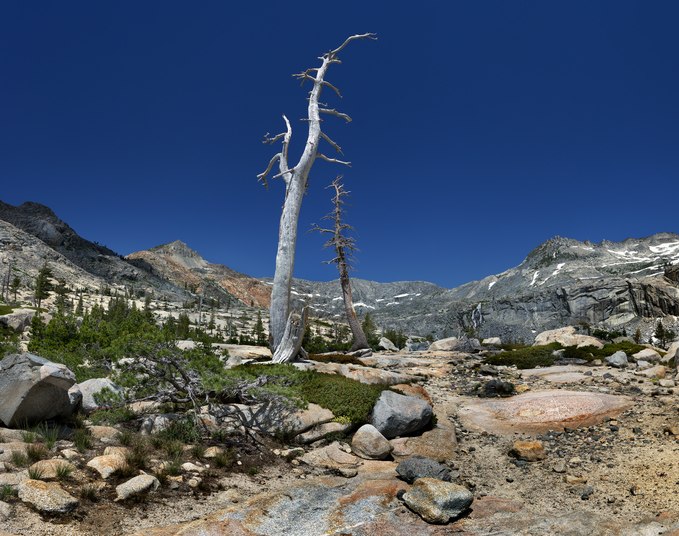The Desolation Wilderness is a granite plateau in the northern Sierra Nevada Range, rising above the western edge of Lake Tahoe. As Kim Stanley Robinson wrote in his book The High Sierra, A Love Story, "Desolation expands after you enter it… The lack of soil created since the last ice age means it's still mostly rock, its scattered trees isolated, small, wind-sculpted."
Few hikers ventured up the trail on this mid-June day. As I climbed, I emerged from the forests at 7000 feet above sea level and entered a strange world I hadn't experienced in many years, where the air was thin and the sky a deep, dark blue. Pockets of plants lined the trail, and fast-moving streams collected snowmelt from surrounding peaks. The spare, expansive space felt almost lunar. Its openness and flat granite slabs made hiking easy, and with the incredibly clear air, the boulders, cliffs, and high rim seemed closer and more attainable. Cold in the shade and hot in the sun, the air became thinner with each step. By the time I reached the trail's end in this vast basin, there was 25% less oxygen to breathe.
At the tree line, life thrives, but the 'standing dead' persist as a reminder of the high country's fragile balance between growth and decay. Enveloped in light, the sun reflected brightly—almost harshly—off the pale granite and glowing snowfields. In 1894, naturalist John Muir described the Sierras as "the range of light…a vast wilderness in a sea of light." Amid the vastness and isolation, this remote corner of California offered a rare and soothing reprieve—a quiet sanctuary in a populous state. Feeling restorative, solitude became a welcome companion.

